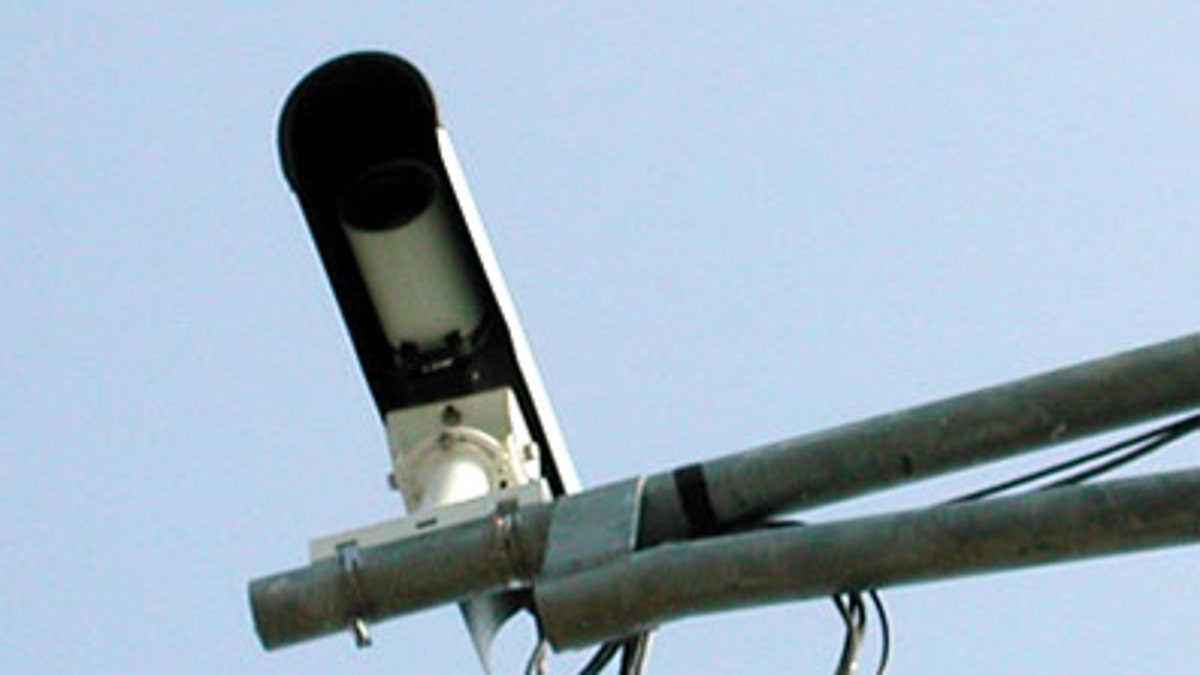
(AP)
WASHINGTON – Red light cameras are helping drivers remember that red means stop and are saving lives, according to a new study out Tuesday by the Insurance Institute for Highway Safety.
The study concludes that the cameras have reduced the rate of fatal crashes by 24 percent in 14 large cities that introduced red light cameras between 1996 and 2004.
"Red light cameras are working," said institute President Adrian Lund. "There are hundreds of people who are alive because some communities had the courage to use this method of enforcement."
In cities with the cameras, the study also noted drops in all fatal crashes at intersections with traffic signals, not just those caused by running red lights.
"We think that they are just paying more attention to intersections as they come up on them because they are more certain that if they violate the red light that they will get a ticket," Lund said.
The institute claims that the reduction translates into 159 lives saved over five years in those cities. If all large cities had cameras, a total of 815 lives could have been saved, according to the study.
In 2009, 676 people were killed and an estimated 113,000 injured in red light crashes, according the National Highway Traffic Safety Administration's Fatality Analysis Reporting System.
Researchers have known for some time that the cameras reduce crashes, but there are now enough cities with cameras to study whether they affect fatal crashes, Lund said. Red light cameras can be a cheaper and safer alternative to officers enforcing red light running, he added.
But some disagree.
Gary Biller, executive director of the National Motorists Association, a Wisconsin-based drivers' rights organization, disputed the institute's finding that the cameras have reduced deaths. He cited previous studies — questioned by the institute — that found that the cameras increase crashes, including rear-end collisions.
As for calling the cameras a low-cost solution, Biller added: "They're not low cost to the motorist."
Biller says less costly and more effective options include improving sight lines at intersections, lengthening yellow lights or using all-red delays in which all lights at an intersection simultaneously go red for a time.
The study looked at 99 cities with populations over 200,000. It compared two periods, 2004-2008, when the most recent fatal crash data were available, and 1992-1996, a period when the 14 cities had not begun red light camera programs.
Fatal red light crashes fell in most cities, but the rate fell 14 percent in the 48 cities without cameras and 35 percent in the 14 cities with cameras in the second period. The biggest drop in the rate of fatal crashes involving red light running was seen in Chandler, Ariz., where deaths dropped 79 percent.
Two cities, Raleigh, N.C., and Bakersfield, Calif., saw increases, perhaps due to growth in those communities, Lund said. Baltimore saw a 14-percent drop in fatal red light crashes, but a 50-percent increase in fatal crashes at intersections with signals.
Red light cameras are the leading edge of automated law enforcement technologies but raise some concerns about safeguarding checks and balances, said American Civil Liberties Union privacy expert Jay Stanley. While he said a violation may be clear most of the time, there are some gray areas.
"People have special circumstances that come up and if there is a cop there you could explain to him," Stanley said. "Computers don't have that ability. Automated law enforcement in general raises questions about how people in special circumstances are treated fairly."
The study provides strong evidence that the cameras can save lives when used appropriately with the goal of making roads safer, said AAA Mid-Atlantic spokeswoman Ragina Averella. "However, without proper ... oversight these automated enforcement measures can sometimes be abused and become revenue generators instead of lifesavers at the expense of motorists," she said.
In Washington, D.C., Police Chief Cathy Lanier said cameras conserve manpower and keep officers safe while reducing fatalities.
"With an automated system, we can do the enforcement without pulling officers out of the neighborhoods where they're doing crime fighting," Lanier said.
Cameras are just part of the reason Chandler, Ariz., has seen red light crash fatalities fall from seven to three while its population more than doubled between the two periods, according to police spokesman Det. David Ramer. The city has used speed boards to remind drivers to slow down and a new highway took a lot of traffic off the streets.
"Nothing's worth risking your life or someone else's life," Ramer said. "I've been there. You think 'I can make this light.' If you might also get a ticket it serves as a reminder."
___
Online:
Insurance Institute for Highway Safety's report: http://www.iihs.org/research/topics/pdf/r1151.pdf

